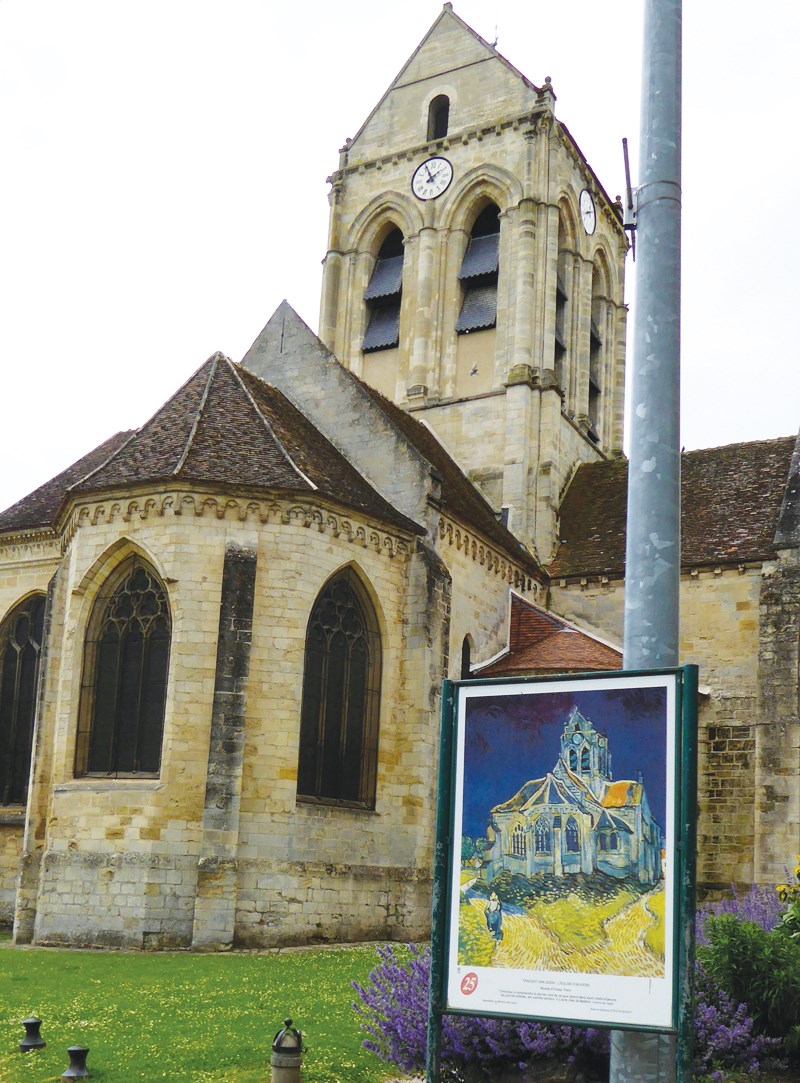In Paris, we’re excited to discover our apartment lies within an early enclave of artists. In fact, the turn-of-the-century flat Vincent Van Gogh shared with his brother Theo is only four blocks away, inspiring a further quest investigating Van Gogh’s time in France.
While in Montmartre, Van Gogh developed techniques to effectively use colours and capture impressions. Heading south, he applied his new impressionist skills in Arles. Travelling there, we learn more about his life along the city’s self-guided Van Gogh walk.
This route cleverly features replicated paintings posted at significant sites. At Café de Forum, we study his starlit Café Terrace at Night. And The Night Café illustrates his charming rented loft. Arena de Arles exudes the excitement of the local bullfighting arena. And Yellow House expresses happiness enjoyed here when residing with Paul Gauguin. We wonder if Gauguin’s departure caused Van Gogh’s breakdown. After cutting off his ear, he was admitted to Saint-Remy asylum. There he produced Self-Portrait with Bandaged Ear among other notable art.
With his brother’s support, Van Gogh next lived – and feverishly worked – in Auvers-Sur-Oise. A short train ride from Paris takes us to this small village, where we follow another educative Van Gogh route.
In a small park below the community centre, a bronze statue honours Van Gogh. Toting a load of artist supplies, his roughly hewn face shows eager anticipation. Huge leafy trees surround him, recalling his Chestnut Trees in Blossom. City Hall stands nearby. A placard shows The Town Hall at Auvers-Sur-Oise picturing this stately white building adorned in colourful Bastille Day bunting.
Van Gogh boarded across the street at Ravoux Inn, which now boasts a great bistro and intriguing museum. A back stairway leads up to Van Gogh’s tiny, stark room. In a larger upstairs room, a film recounts his 70 plus masterpieces produced during his two-month stay. Letters to Theo reveal preliminary sketches and insightful comments regarding his future work, demonstrating a ferocious creativity. On painting Adeline, the innkeeper’s daughter, he writes, “I should like to paint portraits which would appear later … as apparitions.”
Nearby signage identifies the home of Daubigny, a famed landscape artist. Van Gogh visited there often and painted several versions of Daubigny’s Garden. Strolling onward, we visit the home of the doctor treating Van Gogh. Known for helping artists, Gachet advised Van Gogh to continue painting as therapy. With such support, he created several masterworks here. His Portrait of Dr. Gachet expresses this Doctor’s intelligence – and melancholy. And Marguerite Gachet in the Garden captures the lovely essence of his daughter.
In town again, signs guide us to a stone block church and a rendition of The Church at Auvers. Another copy of this masterpiece hangs inside. As non-Catholic, Van Gogh probably never attended.
Directed onward, we find a beautiful cemetery atop a hill. Forbidden burial in the church graveyard, Theo buried his dear brother at the edge of a wheat field. And when Theo died two years later, his wife interred him next to Van Gogh. This cemetery developed as others sought to be buried near Van Gogh.
The marked pathway takes us between large fields; another placard features Wheat Field of Crows. Thick brush strokes intensify the rippling yellow grain, swarming black crows and hostile cobalt-blue sky. It’s commonly believed Van Gogh shot himself in such a field.
The trail continues between swaths of grain toward a hedge of leafy trees. Van Gogh illustrated this rolling farmland in his glowing Landscape at Twilight. We return to town through a thicket of greenery.
Back in Paris at Musée d’Orsay, we view many of Van Gogh’s original paintings with a newfound understanding. Wonderfully vibrant and inventive, they all stand out in a gallery filled with splendid contemporary artwork.
Check out direct services to Paris with Air France: www.airfrance.com. See Eurorail schedules and book tickets at: www.raileurope.ca.



